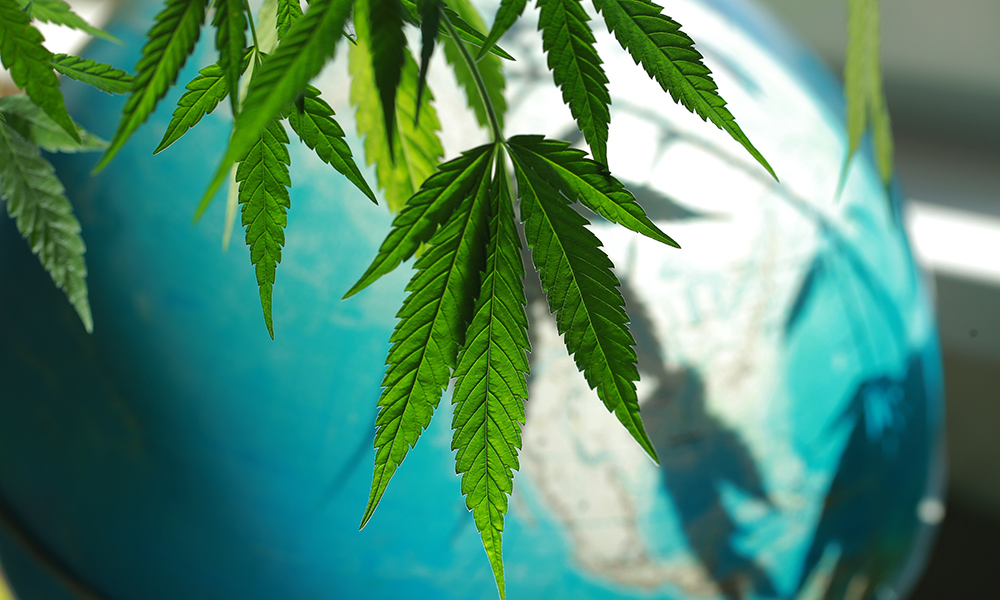
Economics
3 Years Of Legal Marijuana in Canada: Pros, Cons & What The US Can Learn
Canada legalized cannabis in Oct. 2018 to make money, improve public health, and help people harmed by the war on drugs. Is two out of three good enough?
So much has happened in the three years and a month since Oct. 17, 2018 that you could be forgiven for forgetting the biggest news of that day: the first day of marijuana legalization in Canada.
America’s slightly more affable and polite neighbor to the north was the second country in the world after Uruguay to allow adults to possess, use, grow, and purchase cannabis — but the first to encourage what could be called “an industry,” welcoming international investors onto to Canadian Stock Exchange, and allowing the construction of titanic greenhouses big enough to get everybody on the continent buzzed.
Though many Americans know Canadian cannabis mostly through the billion-dollar publicly traded companies, Prime Minister Justin Trudeau’s government initially set out to accomplish three things with legalization, (none of them to do with business): Keep weed away from kids; “keep profits out of the pockets of criminals” (that’s what a Bitcoin wallet is for); and to “protect public health and safety” by allowing full-grown adults to buy legal pot, from neither kids nor criminals.
Three years on, with top Senate Democrats pitching federal marijuana legalization in the United States to their colleagues and more U.S. states legalizing cannabis themselves, how’s all that going? Cannabis Now consulted with experts and crunched the numbers. Here’s what we found: a project still in motion, with some appreciable results in some areas, that still badly fails to deliver in others.
Public Health: A Win-Win-Win
Buying weed on the “traditional market” is usually fine. Over the past 50 or so years of cannabis prohibition, the drug remained one of the safest ways to catch a buzz, with no recorded deaths — but can be sometimes dangerous, as the vape-lung crisis of late 2019 in the United States demonstrated. Sixty-eight people died and thousands were hospitalized after using vaporizer products purchased on the illicit market, cut with a food additive that coated lungs in a viscous goo.
Notably, that did not happen in Canada. And that terrible pesticide scandal — one of several — happened in the old medical cannabis days, when Health Canada was in charge of a few giant medical growers. Since then, Canadians are able to purchase legal cannabis online or in person. They can go to a store or get cannabis delivered to them.
True, it did take some time for dispensaries to offer vapes and edibles, and access can depend on where you live, but that did all eventually happen, and with the online option—what’s the problem?
“From a public health perspective, things are working great,” said Daniel Bear, a professor of criminal justice at Humber College in Toronto, who has studied the cannabis legalization movement extensively. “You’ve got tested, safe, regulated products, and you’ve got methods other than combustion that people can access easily.
Profits: Strangled By Regulation, Or True Pipe Dreams?
In at least one way, Canada like Pennsylvania, or New Hampshire — if not Florida.
If you want to buy liquor in the Granite or Keystone states, you have to go to a state-owned liquor store. Initially, cannabis sales in Ontario, Canada’s biggest province, were also all going to be through a state-owned merchant, though a changeover in political parties running the province in 2018 altered the formula somewhat. But for years there were strict regulations in place limiting how many private businesses can sell cannabis, and where — meaning Canadian cannabis resembled the tightly controlled markets in U.S. cannabis states including Florida and New Jersey.
More recently, Ontario lifted the cap and a “significant retail sprawl ensued,” as business professors Joseph Aversa, Jenna Jacobson and Tony Hernandez, writing in the Conversation put it, with the number of retail stores expanding from 25 to 1,000.
The saga is significant as a case study for Americans for a few reasons: Under a federalist system, the reality is going to be different from province to province, or state to state — cannabis in Kentucky won’t be the same as in Colorado — but the common thread is almost certainly going to be strict control determining what the market can and can’t do, and the market chafing at the bit.
But while government may have constricted retail capacity, government encouraged a supply explosion. Those massive greenhouses and grow operations are producing more cannabis than anyone has demonstrated they need or want. Many have gone bust, laying off hundreds of people and creating massive losses for publicly traded companies and their shareholders, red ink that may only be balanced in some uncertain future, when Canadian weed stones the world.
If that ever happens.
“A mix of greed and naiveté led this industry to great heights – and has left it on its knees,” as cannabis consultant Alastair Moore told the Guardian last year. While some made lots of money, others lost their investments and now many others have lost their jobs.”
Then again, that’s not government’s fault, per se. Government is allowing private enterprise to do this after all. They didn’t say everyone would get rich. And the country is richer overall.
“There’s a billion dollars added to the GDP, there’s tens of thousands of people employed. From a commercial perspective, things are working,” said Humber College’s Bear. “The market’s working fairly well despite the regulations and large corporations doing their best to get in the way of that, almost.”
Though there are the usual hiccups, disruptions, and growing pains — as well as the complaints about overregulation, or big business taking over — the fact that cannabis in Canada after legalization is behaving like any other strictly regulated industry is sign that something’s working.
But not everything. The biggest shortcoming in Canada is also one of marijuana legalization’s biggest promises: Justice.
Criminal and Social Justice: Fail
It’s worthwhile remembering who it was that pushed hardest for legalization in Canada, and what they did before they were policymakers. Trudeau’s point man for legalization, the politician credited with making it happen, was Bill Blair, a former Toronto chief of police.
Blair was concerned about a market, concerned about the kids, and concerned about product safety. As Bear observed, Blair was not concerned too much about the people he used to put in jail for weed, who do not enjoy what fruits legalization offer.
“No one said, ‘Oh, and by the way, we screwed over people for the better part of a century, and they were disproportionately nonwhite, let’s make sure they’re empowered or have the harm done to them reduced,’” he said.
What Blair did do was add more crime. Handing a joint to someone under 18 can lead to a years-long prison term — a punishment much stricter than handing them a beer. Though possibly as many as 250,000 people have cannabis offenses on their records for which they’re eligible to be pardoned, getting a pardon is so expensive and time consuming that only about 400 people have secured one, as CTV reported in March.
As a review from two University of Toronto researchers found last year, Black, Latino, and First Nation people are still arrested for cannabis at rates much higher than whites. And this is after legalization. One problem is that the size of the problem is still something Canada has yet to fully assess.
“Canadian cannabis legalization lacks measures to redress the racialized harms caused by the war on drugs because the full extent of these harms remains largely unknown,” as researchers Akwasi Owusu-Bempah and Alex Luscombe wrote.
Three years on in Canada, people are buying safe product from big companies at prices some feel are too high, partially due to taxes, while people who suffered to continue to suffer and don’t enjoy equal access to the opportunity presented. If this sounds like legalization in some states in the U.S., it should. And absent some major reform at Congress and in state capitols, this is probably what legalization in the U.S. will look like, too.


























